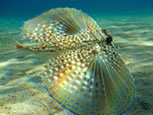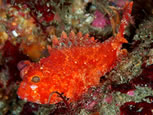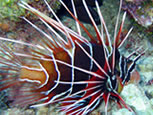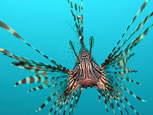Classification

Phylum: Chordata
-Have a notochord as the main internal skeletal support at some stage of their development, tubular nerve chord, gill slits leading into the pharynx, blood contained in vessels, postanal tail.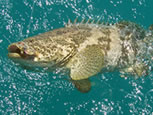
Class: Actinopterygii
-Fin rays, fins are webs of skin supported by horny spines (rays), fin rays attach directly to the basal skeletal elements.Order: Scorpaeniformes
-Head and body tend to be spiny or have bony plates, membranes between lower rays are often notched, pectoral fin and caudal fin usually rounded.Family: Scorpaenidae
-Compressed body, spines on the head, 11-17 spines on dorsal fin, 11-25 rays on pectoral fin, venom glands on the dorsal, anal, and pelvic fins .Genus: Pterois
-Marine fish containing venom, pectoral fins are fan-shaped, and a spiky first dorsal fin.Species: Pterois volitans
-Characterized by displaying 13 dorsal spines, distinct red and white stripes, feather-like pectoral rays, bony ridge across the cheek and the flaps that partially cover both the eyes and nose, and the anal fin has 3 spines and 6-7 rays.This phylogenic tree is based on mitochondrial and nuclear DNA sequences. According to the tree, Pterois volitans is most closely related to Pterois miles. The tree also shows Pterois volitans shares a common ancestor with the zebra lionfish (Dendrochirus zebra), ragged-finned firefish (Pterois antennata), frillfin lionfish (Pterois mombasae), and radial firefish (Pterois radiata).





